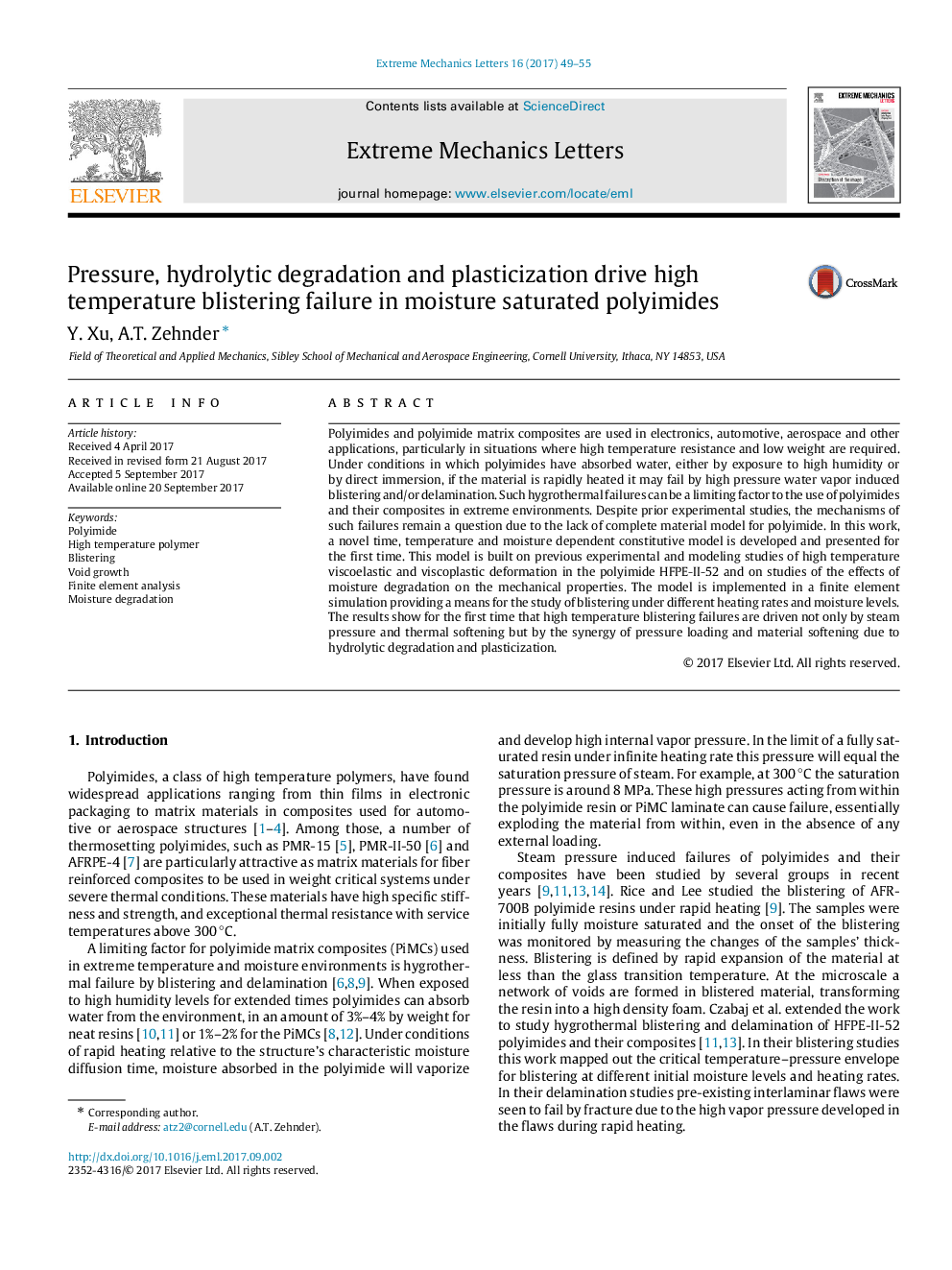| Article ID | Journal | Published Year | Pages | File Type |
|---|---|---|---|---|
| 5014445 | Extreme Mechanics Letters | 2017 | 7 Pages |
Abstract
Polyimides and polyimide matrix composites are used in electronics, automotive, aerospace and other applications, particularly in situations where high temperature resistance and low weight are required. Under conditions in which polyimides have absorbed water, either by exposure to high humidity or by direct immersion, if the material is rapidly heated it may fail by high pressure water vapor induced blistering and/or delamination. Such hygrothermal failures can be a limiting factor to the use of polyimides and their composites in extreme environments. Despite prior experimental studies, the mechanisms of such failures remain a question due to the lack of complete material model for polyimide. In this work, a novel time, temperature and moisture dependent constitutive model is developed and presented for the first time. This model is built on previous experimental and modeling studies of high temperature viscoelastic and viscoplastic deformation in the polyimide HFPE-II-52 and on studies of the effects of moisture degradation on the mechanical properties. The model is implemented in a finite element simulation providing a means for the study of blistering under different heating rates and moisture levels. The results show for the first time that high temperature blistering failures are driven not only by steam pressure and thermal softening but by the synergy of pressure loading and material softening due to hydrolytic degradation and plasticization.
Related Topics
Physical Sciences and Engineering
Energy
Energy Engineering and Power Technology
Authors
Y. Xu, A.T. Zehnder,
